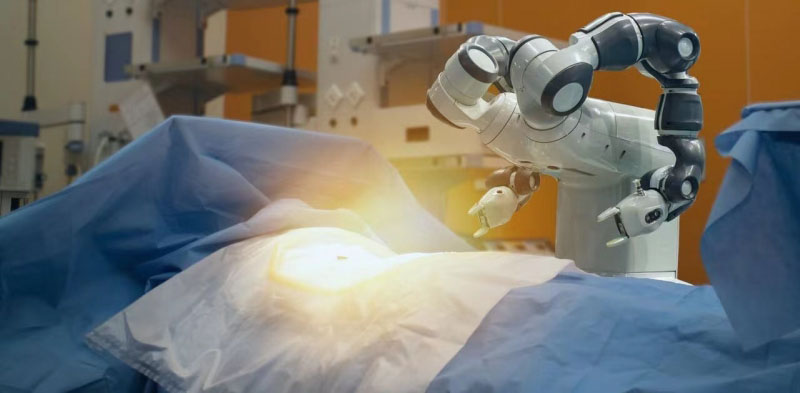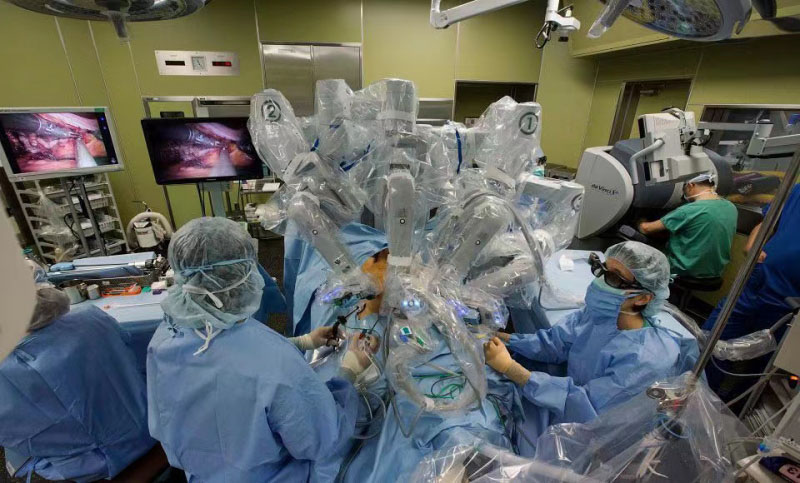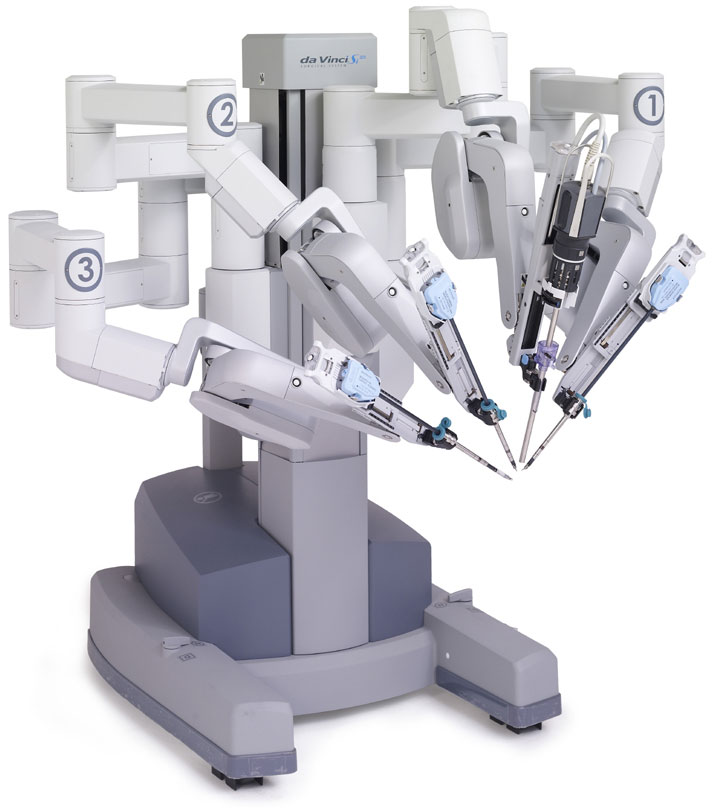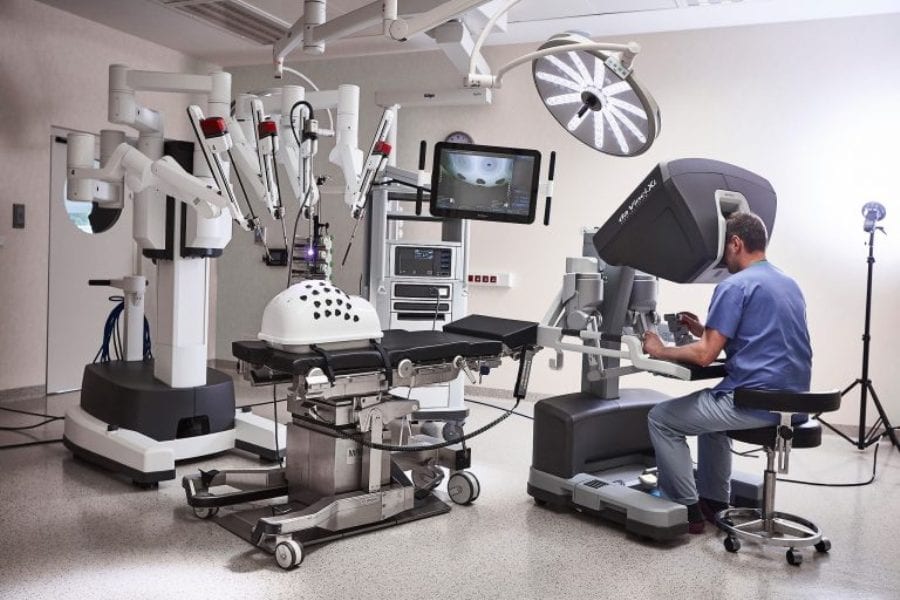Call Us Now
TEL: +86-4000988557;
Teams: gfreex@hotmail.com;
WeChat: Troysupply_com;
QQ ID: 8936906.
The State Drug Administration has changed the scope of clinical application of the "Laparoscopic Surgical System". It is reported that recently, after the hospital's rigorous procurement plan, approval and bidding, this robot® has been installed in the First Affiliated Hospital of Heilongjiang University of Traditional Chinese Medicine.

Due to the wide range of indications and the legendary gold-absorbing history created by the Da Vinci series of surgical robots, endoscopic surgical robots have always been placed high hopes by the capital, and it is also a must for domestic Da Vincis.
According to the statistics of the International Federation of Robotics, in 2020, endoscopic surgical robots will swallow up 63% of the global market in the field of surgical robots. However, there is a stark and sharp contrast between the fervor of capital and the difficulty of commercialization, and surgical robots are inevitable. experienced ups and downs. When enterprises have passed the three hurdles of landing, financing, and obtaining certificates, they will usher in an era of commercialization with more brutal competition.
 The first commercial installation:
The first commercial installation:
After ten years of independent research and development, innovation and improvement, the first domestic open doctor console three-arm laparoscopic surgery robot approved by the NMPA for listing - the laparoscopic surgery system has achieved the first commercial installation in China. According to reports, intraperitoneal The speculum surgery system is a laparoscopic surgery robot designed for various complex minimally invasive surgeries. It has significant advantages over traditional laparoscopic surgery in terms of precise operation, elimination of tremor, and improvement of doctor's comfort.
Adapted to its own and mainstream 3D high-definition endoscope systems at home and abroad, it enables surgeons to obtain real-time surgical field of view through endoscopes, accurately touch the surgical area in complex surgical environments, and control the operation area of patients through the master-slave control system. Completely reproduce the doctor's operation intention.
The device is a product of Suzhou Kangduo Robotics Co., Ltd., a wholly-owned subsidiary of Harbin Sagerui Intelligent Medical Equipment Co., Ltd. It is understood that Harbin Sagerui Intelligent Medical Equipment Co., Ltd. is a high-tech enterprise focusing on the research and development, production and sales of surgical robots. Since its establishment, the company has always insisted on independent innovation and strived to break the monopoly of foreign products. After nearly ten years of development Through exploration and accumulation, a series of core technologies and original achievements have been formed in the field of surgical robots.
With the approval of Minimally Invasive Robotics and Jingfeng Medical's endoscopic surgery robots, the multi-hole field of endoscopic surgery robots in China has formed a competitive pattern of "1 (import) + 4 (domestic)".
It is worth mentioning that this installation is a high recognition of the technical strength of the equipment and the training service system by the hospital and the market. It is also an important milestone for the domestic surgical robot with independent intellectual property rights from research and development to commercial transformation. The installation of Taiwan's domestic laparoscopic robot is of great significance to the development and popularization of domestic surgical robots.

The commercialization dilemma of domestic Da Vincis:
Although many surgical robots are under the banner of "contrasting Da Vinci", in the past 20 years, almost no companies have seen Da Vinci's taillights on the commercialization track of surgical robots.
In 1997, the first generation of da Vinci robotic surgery system was successfully developed, and it was applied in clinical practice after passing the US FDA certification in July 2000. In recent years, the great success of da Vinci surgical robot has made it synonymous with surgical robots.
Although the da Vinci surgical robot is currently the most successful and widely used surgical robot in the world, it is extremely expensive. According to public data, the domestic price of the da Vinci surgical system (complete machine) is about 20 million yuan, including the wire-driven mechanical operation arm as a consumable, each limited to ten times of use, and the replacement of a single arm costs tens of thousands of yuan. Therefore, the domestic use of Da Vinci for surgery costs at least 50,000 to 100,000 yuan.
The da Vinci surgical system is a major product in the global endoscopic surgery robotics market. As of September 30, 2021, the United States is the largest endoscopic surgical robot market, with 4,005 installed da Vinci surgical systems, accounting for 61.4% of the global installed base. Despite China's large patient population and the large number of traditional minimally invasive surgeries that can potentially be performed using surgical robots, the market penetration rate of laparoscopic surgical robots in China is significantly lower than that of the US market. The number of da Vinci surgical systems installed in China is only about 240, accounting for 3.7% of the global installations, and only less than 10% of the tertiary hospitals have adopted the da Vinci surgical system.
After 2010, global surgery has entered the era of robots, and many domestic robot projects have begun to enter clinical practice. The orthopedic robot navigation and positioning system independently developed by Tianzhihang Company, a representative domestic company, has obtained the first NMPA registration license for domestic robots. After 2015, the research and development of surgical robots in various departments in China has entered a state of flourishing, the industry has become more and more vigorous, and domestic surgical robots have become more professional.
The Chinese government has promulgated a series of regulations in recent years to promote the development of innovative medical devices such as surgical robots. In April 2021, the Da Vinci Surgical System was included in the Shanghai medical insurance reimbursement list, showing the government's recognition of the importance of endoscopic surgery robots. More endoscopic surgical robot products may also be included in the medical insurance reimbursement list, further opening up the Chinese endoscopic surgery system. Surgical Robotics Market.
 Conclusion:
Conclusion:
Due to the characteristics of long research and development time, large capital investment, and long payback time, surgical robots have always been a huge consumption project, and they are like gold-eating beasts under the scientific research of time and financial resources. Looking back at 2022, surgical robots have experienced a night of cold wind, and they have also suffered from losses. Now that the sale of surgical robot has been officially completed, and the installation of the first commercial domestic laparoscopic robot, we have reason to believe that this pearl will eventually shine brightly.
Surgical Robot;
Medical Robot;
Clinical Robot
 Online service
Online service 4000988557
4000988557 sales1@troysupply.com
sales1@troysupply.com sales2@troysupply.com
sales2@troysupply.com Richard Liu
Richard Liu TROY
TROY 8936906
8936906 Troysupply_com
Troysupply_com